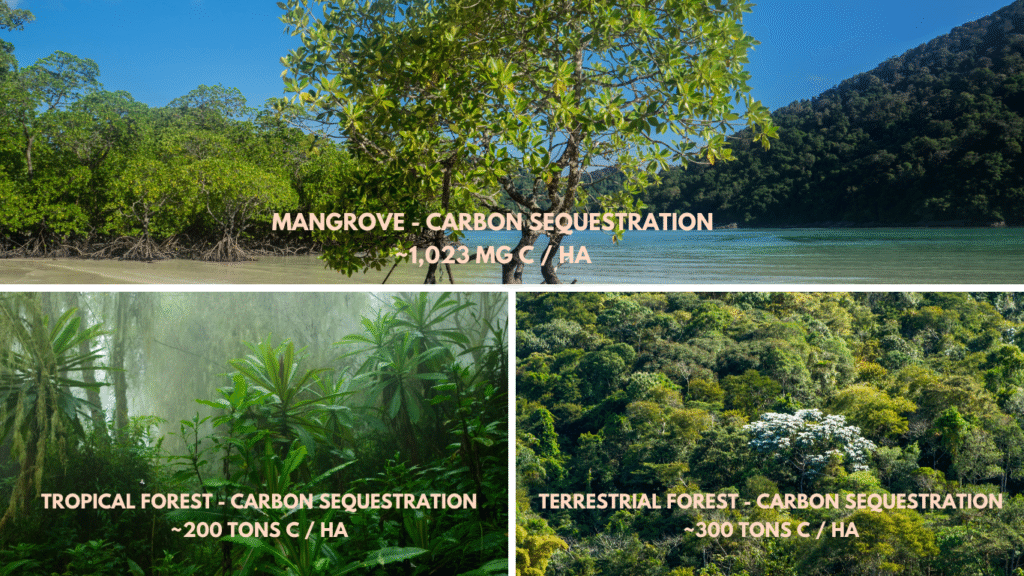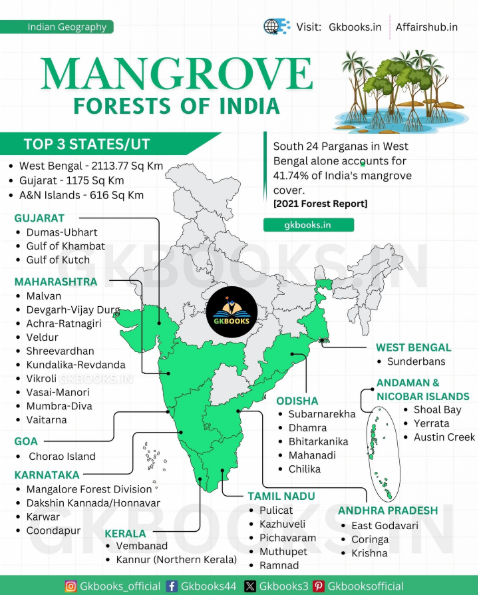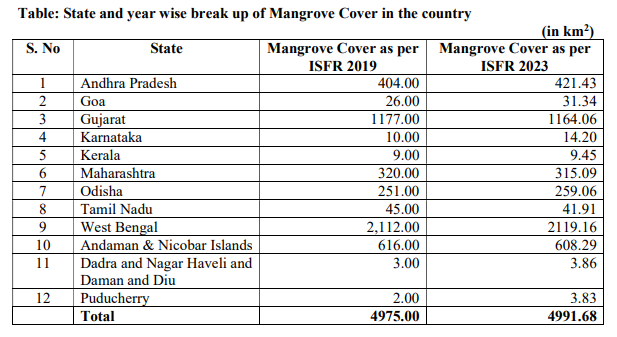Amazing Mangrove Triumph: 2,400 Hectares Planted In 4 Years
Did you know? Mangroves can reduce wave energy by up to 66%, saving coastal areas from erosion and flooding. Pretty impressive, right? Yet, despite all they do, mangroves have been shrinking around the world. According to the Global Mangrove Watch, global mangrove cover was 147,359 km² in 2020, a 3.4% decline since 1996. A bit of a bummer, huh? But there’s a silver lining. Recent satellite data shows the decline is slowing, and in many river deltas and estuaries, mangroves are actually regrowing.
In Tamil Nadu, the story gets even better. Over the past four years, the state has planted 2,400 hectares of new mangroves in 11 districts and restored 1,200 hectares across seven districts, a huge win for climate action and coastal protection. This remarkable Tamil Nadu mangrove restoration effort is setting an inspiring example for the rest of India.
Tamil Nadu Mangrove Restoration: From Vision To Action
Mangroves may look like tangled roots and muddy waters, but they’re actually some of the most powerful ecosystems on the planet. Unlike tropical and temperate forests that store most of their carbon above ground, mangroves stash the majority deep in their waterlogged soils — making them five times more effective long-term carbon vaults.

For a long time, though, their true worth was mostly known only to the coastal communities who lived alongside them, depending on their roots and creeks for fish, wood, and protection from storms.
Then, in 1989, M.S. Swaminathan, a geneticist and plant breeder from Tamil Nadu, highlighted the urgent need for sustainable mangrove management. Fast forward a few decades, and his home state has taken that vision seriously. Today, Tamil Nadu is reviving and expanding its mangrove forests along the coast, showing how ideas planted decades ago can grow into thriving ecosystems and stronger, more resilient coastlines.
In a wonderful full-circle moment, the government has teamed up with the M.S. Swaminathan Research Foundation (MSSRF) to give its coasts the care they deserve. Together, they’re working on restoring mangroves, seagrass, and coral reefs, studying coastal ecosystems, and helping local communities build sustainable livelihoods.
Mangrove Triumph in Motion
According to WWF India, India’s shores are lined with over 4,750 square kilometers of mangroves, adding up to about 3% of global cover. And now, with mangrove restoration and plantation drives picking up speed, our coastal forests will soon be thriving like never before, boosting India’s mangrove cover. And it’s not just one state — across the country, many states are taking bold steps to restore these vital blue carbon ecosystems along the shoreline.

Sundarbans, West Bengal
The Sundarbans, one of the world’s largest mangrove forests, had lost huge swathes of greenery to storms, cyclones, and erosion. But thanks to Change Initiatives’ “Plant Mangroves: Rebuild Sundarbans” program, 350,000 saplings have been planted across Chhotomollakhali, Kumirmari, Gosaba, and Nazat, boasting an 85% survival rate.
In another coastal revival, 1.5 lakh mangrove saplings were planted on 40,000 sq. ft of vulnerable shoreline. Led by the “Mangrove Man” Umashankar Mondal and backed by TM International Logistics Limited (TMILL) and Afflatus Foundation, these saplings are turning bare coastlines into green shields.
Bhitarkanika National Park, Odisha
Government funding and the Mangrove Initiative for Shoreline Habitats & Tangible Incomes (MISHTI) program are breathing new life into Bhitarkanika’s mangroves. With Rs 4.87 crore going into mangrove conservation and plantations along the coast, this Ramsar site is greening up fast, transforming vulnerable shores into forests that soak up carbon, stabilize the soil, and protect biodiversity.
Navghar village, Maharashtra
The coastlines of Maharashtra are turning green again! Mangrove restoration projects led by the Forest Department, UNDP India, and Green Climate Fund are planting and nurturing thousands of saplings. In Navghar, women’s Self-Help Groups are running the show—planting, nurturing, and even mixing mangrove care with sustainable crab farming.
Planting Hope, One Mangrove at a Time

Source: Ministry of Environment, Forest and Climate Change
India’s got miles of coastline—and miles of potential to grow more mangroves! It’s heartwarming to see governments and local communities teaming up to protect these carbon-capturing, wave-busting, wildlife-loving, blue carbon ecosystems. Stories like these are exactly what keep us inspired. At Green Pistachio, we love sharing these feel-good stories of climate action done right.
Want to read more such uplifting eco-stories? Visit Green Pistachio.
And if you’re a brand or business looking to support mangrove restoration and conservation, let’s chat—we’ll guide you on how to do it right.
References:
https://www.undp.org/india/stories/women-lead-charge-mangrove-restoration-maharashtra






